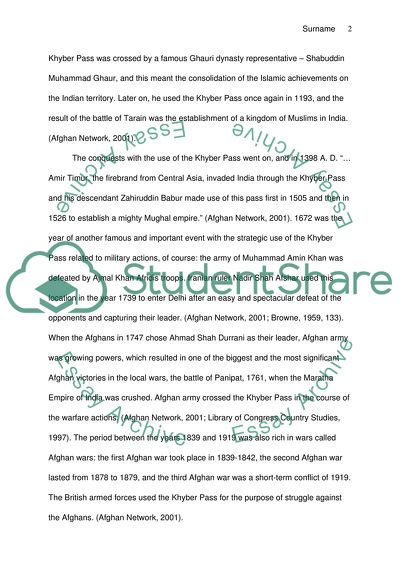Cite this document
(Why Khyber pass in Afghanistan can't be taken over Case Study, n.d.)
Why Khyber pass in Afghanistan can't be taken over Case Study. https://studentshare.org/geography/1874474-why-khyber-pass-in-afghanistan-canapost-be-taken-over
Why Khyber pass in Afghanistan can't be taken over Case Study. https://studentshare.org/geography/1874474-why-khyber-pass-in-afghanistan-canapost-be-taken-over
(Why Khyber Pass in Afghanistan can'T Be Taken over Case Study)
Why Khyber Pass in Afghanistan can'T Be Taken over Case Study. https://studentshare.org/geography/1874474-why-khyber-pass-in-afghanistan-canapost-be-taken-over.
Why Khyber Pass in Afghanistan can'T Be Taken over Case Study. https://studentshare.org/geography/1874474-why-khyber-pass-in-afghanistan-canapost-be-taken-over.
“Why Khyber Pass in Afghanistan can'T Be Taken over Case Study”. https://studentshare.org/geography/1874474-why-khyber-pass-in-afghanistan-canapost-be-taken-over.


